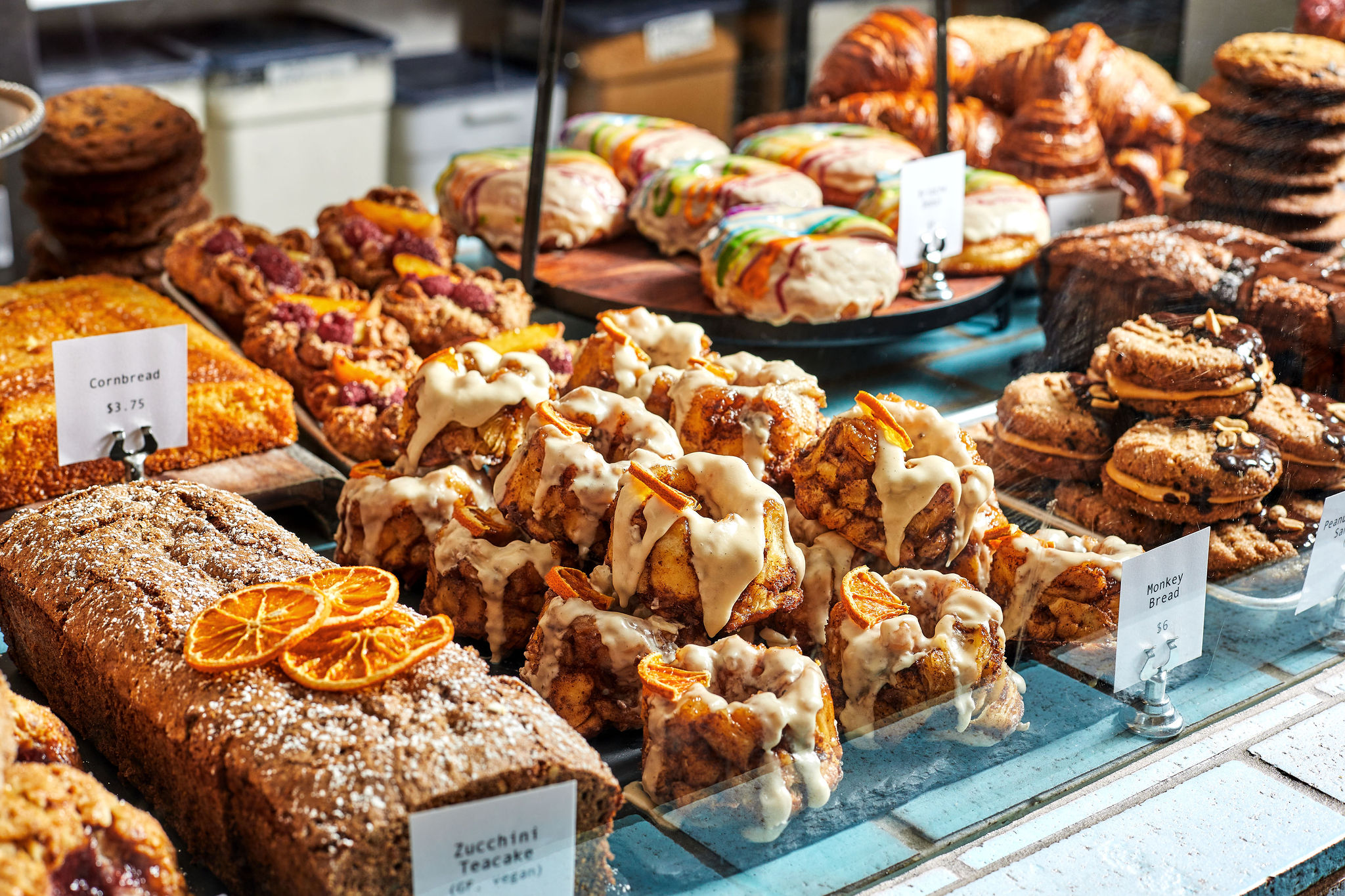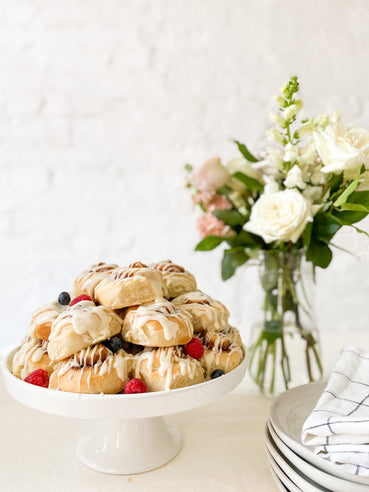Planning a Birthday Party Maddington? Tips for a Wonderful Event
Comprehending the Art of Pastry Shop Products: From Freshly Baked Breads to Tempting Pastries and Finger Foods
The elaborate art of pastry shop items encompasses a range of strategies and ingredients that transform standard components right into culinary delights. From the science behind the perfect loaf of bread, where fermentation and gluten development play pivotal functions, to the finesse needed for developing split breads, each aspect reveals an engaging narrative of craftsmanship. Additionally, the adaptability of finger foods shows exactly how taste and appearance can be skillfully integrated to involve varied preference preferences. As we explore these aspects, one might ask yourself: what underlying principles govern the success of these precious developments?
The Science of Bread Making
At the heart of every loaf of bread exists a remarkable interplay of chemistry and biology. The procedure of bread making starts with the combination of flour, salt, water, and yeast-- each active ingredient playing an essential function in the final product.
Yeast, a living organism, ferments the sugars existing in the flour, creating carbon dioxide and alcohol at the same time. The carbon dioxide gas develops bubbles in the dough, creating it to increase and develop a light texture. The temperature and moisture throughout fermentation substantially affect yeast activity and, subsequently, the bread's flavor and appearance.

Learning Pastry Strategies
Exactly how can one achieve the delicate equilibrium of structure and taste that defines exceptional bread? Mastering pastry strategies needs a deep understanding of active ingredients, techniques, and the scientific research behind them. Fundamental to this craft is the option of top quality active ingredients-- flour, butter, sugar, and eggs-- each playing an important duty in the final item's taste and texture.
The strategy of lamination, which involves folding layers of dough and butter, produces the wanted flakiness in pastries like croissants and puff bread. Accuracy in temperature is crucial, as butter should stay cool to ensure ideal layers. In a similar way, proper mixing techniques, such as the creaming strategy for cakes, ensure even consolidation of air and fat, causing a light and airy crumb.
Moreover, maintaining the ideal moisture degrees throughout baking can considerably influence the result, making certain that breads rise correctly and achieve that golden-brown finish. Lastly, the art of pastry likewise demands persistence and method; each attempt enhances one's skill and understanding of the complex equilibrium needed to produce alluring breads that thrill the senses. Mastery in these techniques ultimately distinguishes an experienced pastry cook from an amateur.
Kinds of Finger Foods
The world of culinary thrills expands past pastries to encompass a wide selection of finger foods, which are commemorated for their comfort and adaptability. These bite-sized treats are perfect for social celebrations, supplying a variety of flavors and textures that deal with diverse palates.

On the sweeter side, bite-sized cupcakes and mini tarts use a wonderful coating to any dish, interesting those with a pleasant tooth. Cheese and charcuterie boards serve as an innovative selection, permitting visitors to tailor their attacks with an assortment of meats, fruits, nuts, and cheeses.
Flavor Profiles in Baking
Baking is you could try here an elaborate dance read this post here of taste accounts that incorporates pleasant, mouthwatering, and umami notes to produce a harmonious experience for the palate. Understanding these profiles is essential for bakers looking for to boost their developments.
Sweetness frequently offers as the structure in baked goods, with sugars, fruits, and natural sweeteners enhancing flavor depth. Components such as chocolate and caramel introduce intricate wonderful notes that can either dominate or enhance other tastes. On the other hand, mouthwatering elements, usually discovered in breads and breads, offer balance and comparison. Ingredients like natural herbs, cheeses, and spices can change an easy dough into a multifaceted taste experience.
Umami, regularly neglected in cooking, plays a considerable role in improving flavors. Active ingredients such as aged cheeses, fermented products, and even particular nuts add to a full-flavored depth that enhances general preference.
Additionally, the interaction of level of acidity from components like buttermilk or citrus zest can brighten flavors, offering a revitalizing counterpoint to sweet taste. By attentively integrating these flavor accounts, bakers can craft products that reverberate with varied tastes, developing an unforgettable cooking experience. Ultimately, understanding flavor accounts is crucial to advancement in the globe of cooking.
Crucial Cooking Tools and Active Ingredients
Recognizing taste accounts in cooking sets the phase for choosing the right devices and active ingredients that facilitate the production of exceptional baked items. The structure of navigate here successful cooking hinge on having vital tools at hand. Secret things include mixing bowls, gauging cups, and spoons for precision, along with a strong stand mixer or hand mixer for easy mixing. A trusted collection of baking pans-- such as sheet frying pans, loaf frying pans, and cake pans-- is vital for achieving preferred textures and forms.
Flour serves as the foundation of a lot of recipes; picking the appropriate type-- be it all-purpose, pastry, or bread flour-- can considerably affect the outcome. Cooking powder and cooking soft drink are necessary for producing lift in cakes and pastries.
Additionally, including taste enhancers like vanilla remove, seasonings, and citrus zest can boost your creations. By making sure accessibility to these basic devices and active ingredients, bakers can with confidence start their cooking trip, crafting a diverse variety of wonderful baked items.
Verdict
In conclusion, the art of pastry shop products incorporates a profound understanding of both scientific concepts and innovative strategies. Mastery in bread production, pastry prep work, and finger food presentation reveals the elaborate partnerships in between processes and ingredients. In addition, checking out varied flavor profiles improves the baking experience, while essential tools and components offer the foundation for success. Ultimately, the captivating globe of baking thrives on the harmonious interplay of scientific research and creativity, leading to a myriad of delightful culinary developments.
Exactly how can one attain the delicate equilibrium of structure and flavor that defines phenomenal pastry? Basic to this craft is the option of premium active ingredients-- flour, butter, sugar, and eggs-- each playing an essential role in the last item's flavor and texture.

Recognizing flavor profiles in baking sets the phase for selecting the right tools and active ingredients that help with the development of extraordinary baked products. Exploring diverse taste accounts enriches the baking experience, while crucial tools and ingredients supply the foundation for success.